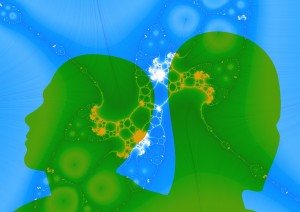I am noticing a pattern that seems to be quite common. People in pain control others around them – especially their close family members. I have not had the chance to research the literature but it is becoming increasingly clear how devastating chronic pain is not only to the patient but also to their family.
I have been aware that many partners remain noticeably silent during my interviews with the patient. At the end of the visit I assign homework. The first step is to have my patient learn about chronic pain. I give them a copy of my book or suggest that they read any book that they might prefer. I schedule a repeat visit within a few weeks to discuss the concepts and develop a plan.
I will also ask his or her partner to learn about pain and fully engage in the DOC project. “If you don’t have chronic pain, just use the word ‘stress’ or ‘anxiety.” I point out that it would be beneficial for them personally to immerse themselves in the concepts. The tools are excellent stress management technique
The benefits to the patient
But the main reason I ask his or her partner to fully engage is that there is a neurological phenomenon of mirror neurons. Actions and words directly stimulate similar parts of the other’s brain. For example, when you smile at a baby he or she will usually smile back. It is not because the baby is happy. The smiling center of the baby’s brain was stimulated. It is a similar process when a person’s laugh will usually cause others to laugh – even though they have no idea what they are laughing at.

I then ask my patient’s partner the question, “What is your day like when your partner is having a bad day?” The response is uniformly, “Bad.” I point out that what do you think your partner’s day is like when you are upset. Many have not thought about that possibility. Maybe they are ruining the day for him or her? I explain that this is not a psychological phenomenon but it is neurological through the mirror neuron effect. Conversely, if he or she is also healing and growing it will stimulate the healthier parts of their partner’s brain. I have long observed that couples who both participate benefit greatly.
In spite of my being as clear (blunt) as I can, it is rare that a partner will engage without me nagging three or four times and even then they resist. This is often true even when they observe their partner experiencing dramatic healing. Why?
Why won’t partners engage?
I just have some thoughts. Based on my personal experience being raised by a mother in chronic pain it is clear that the person in pain has a lot of power within the family. My mother was endlessly angry and was physically and emotionally abusive. She also always got her way – regardless of the consequences. Anytime she was challenged she retreated to her room because she did not feel well. Her pain and behavior would delay and destroy simple family events. She felt she had the right to lash out at anyone anytime she wanted to. Pain=Anger=Abuse
No matter how committed a partner might be it is very difficult to live with someone in pain. How could you not be resentful? Although you might consciously want your partner to feel better, I am guessing that there might be some deep, buried feelings that would block supportive action.

What needs are being met?
Chronic pain is also a complex family issue in that to remain together as a couple there must be needs that are being met by their partner being ill. Do they have an unconscious need to be controlled? Has he or she been abused in the past and it is a familiar pattern? If a person in a family gets better then it calls the others out. They have lost some of their own excuses not to heal. I have witnessed patients improve, even for a few years, get pulled back into the disabled role by intense family pressure. Breaking Loose – Not Quite
Dr. Bernie Siegel’s Observations
I have enjoyed getting to know and work with Dr. Siegel, who is a surgeon and author of several books, including Love, Medicine and Miracles. He has taught me a lot about human nature and has helped many people with serious diseases tap into their own healing powers. He has some insights into the family dynamics around pain.
“If I don’t have my pain how do I get attention?”
SIEGEL’S SIGN
When everyone in the family looks worn or ill and one person doesn’t guess who has the ‘pain’.”
“One family told me they hired a nurse for their sick sister and she would wake them up at night and let the nurse sleep. Also I guaranteed her a cure at her next office visit and privately told the family to watch what happens. She never returned to the office but would meet me in the ER now and then for help.”
It has become clear to me that many people don’t want to give up their pain. Even though they are still truly suffering, they somehow become addicted to power of it and the ability to retain the attention of the whole family. There is also the trend for a family member to assume the identity of a caretaker to the point of neglecting his or her own needs.
Are you really willing to give up the power of your pain? It is anxiety-producing to give up lifelong behavioral patterns? You might be one of the people I have asked to help out with healing my patient and your life partner. How serious are you about really wanting him or her to experience a rich and full life? Could you be the person who is having some your needs met by taking care of someone who is disabled? Most of this occurs at a deep unconscious level. I am encouraging you to take a good look at your family dynamics. The fact you are reading this post is a good start.
